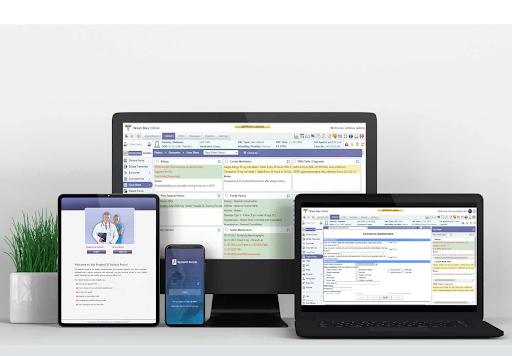In today’s digital world, a lot of information is stored and transmitted electronically, and the medical services sector is no exception. Most doctors have long abandoned the use of paper media. Instead, electronic medical records, or simply EMRs, are being actively used. They are a convenient and universal tool that can significantly simplify and speed up the solution of numerous tasks.
In order for a medical institution to gain access to a personal records system, it must contact those who know how to create EMR software and its key features. Those who are just starting to get acquainted with this software should familiarize themselves with its essence and main varieties.

What is it?
An EMR is a patient’s medical record made in digital format. EMR systems refer to the unique software required to create, store, and transmit information about hospital or clinic clients.
Electronic type of records store a large amount of patient data, including:
- all diagnosis;
- medications taken;
- medical history;
- vaccination history;
- presence of allergies;
- previous test results;
- survey results, etc.
In addition to the fact that EMR allows clients to store and quickly organize patient data, these software solutions can be used for other purposes:
- patient complete access to medical information through websites and online portals;
- online drug prescriptions without the need to visit a clinic;
- ordering tests and registering for examinations;
- invoicing for services provided, etc.
It is a universal and helpful tool that medical workers and all patients undergoing treatment and examinations can use.
What are the key benefits of using EMR?
More modern clinics are interested in implementing specialized EMR software. Several vital benefits can explain this:
- reducing the likelihood of medical errors;
- increasing the effectiveness of treatment;
- control of all data through one tool;
- improved mutual understanding between staff and also patients;
- quick access to the necessary data.
Therefore, the system is being actively implemented worldwide. However, the key to success is competent development and selection of the appropriate type of modern system.
Types of EMR solutions
There are few varieties of these medical information storage systems, which are called subsystems. They differ in how they use different settings and OS.
- Certified. All such solutions are divided into certified and non-certified. Certification is a sign of compliance with the highest safety and functionality requirements. It is not so easy to get certified, and any violation may result in the certificate being revoked;
- Cloud. Such tools offer remote access to software. The development company is responsible for storage and maintenance. In most cases, these EMRs are less expensive than some modern on-premises type of systems;
- Mental health special systems. Some EMRs are explicitly created for specialists in the field of psychology and psychotherapy. Unique features and advanced capabilities distinguish them.
EMR is a modern and highly efficient way to eliminate outdated paper records. Healthcare workers get quick and accurate access to the complete information about patients and their current medical histories, and patients themselves can, therefore, expect a higher quality of medical care.
Modern IT companies are actively developing such software solutions for medical institutions. It opens up additional opportunities for clinics and hospitals that want to implement such a system at home.
Interesting Related Article: “Why EHRs & EMRs are Better than Medical Records on Paper“









